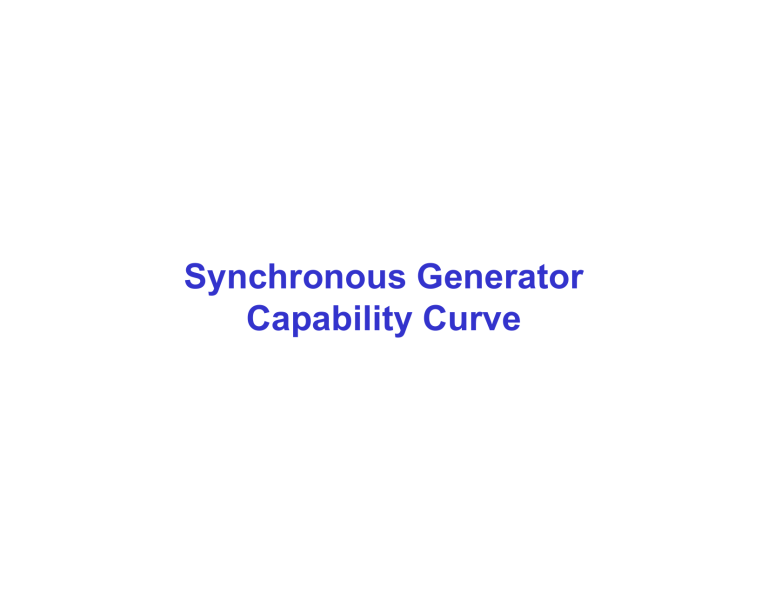
Synchronous Generator Capability Curve Generator Capability Curves (1) (1) Stator Copper Loss (stator heating): PSCL 3I R 2 A s The maximum allowable heating of the stator sets a maximum phase current IA for the machine. It’s equivalent to set a maximum apparent power for the machine. (Power factor is irrelevant.) (2) Rotor Copper Loss (rotor heating): PRCL IF2 RF The maximum allowable heating of the rotor sets a maximum field current IF for the machine. It’s equivalent to set a maximum EA for the machine. (3) Prime-mover’s Power Limit. Generator Capability Curves (2) E A V jX s I A (rotor heating) (stator heating) rotor field current sets the rated power factor Generator Capability Curves (3) E A V jX s I A Assume V keeps rated value. Multiply the above figure by P Q 3V X S Generator Capability Curves (4) Q P P Q flip capability curve Generator Capability Curves (5) Q P Add prime mover’s power limit (real power) Example 3 (1) A 480V, 50 Hz, Y connected, six pole synchronous generator is rated at 50 kVA at 0.8 PF lagging. It has a synchronous reactance of 1.0 per phase. Assume that this generator is connected to a steam turbine capable of supplying up to 45 kW. The friction and windage losses are 1.5 kW, and the core losses are 1.0 kW. (a) (b) (c) (d) Sketch the capability curve for this generator, including the prime-mover power limit. Can this generator supply a line current of 56 A at 0.7 PF lagging? Why or why not? What is the maximum amount of reactive power this generator can produce? If the generator supplies 30 kW of real power, what is the maximum amount of reactive power that can be simultaneously supplied? sg3.m Example 3 (2)




